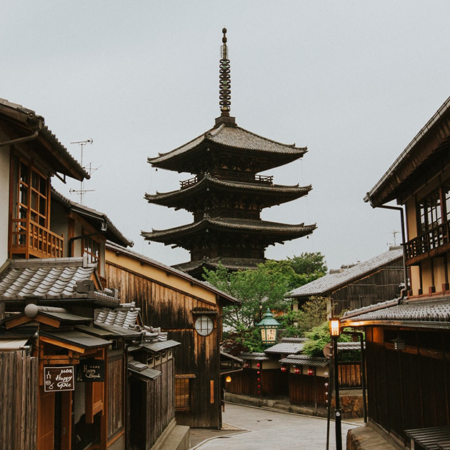1-Day Customized Tour in Kyoto
Lots of popular destinations are packed in Kyoto; temples, shrines, Japanese sweets shop, and souvenir shops.
60,000 JPY
Including tax
Price up to 5 people
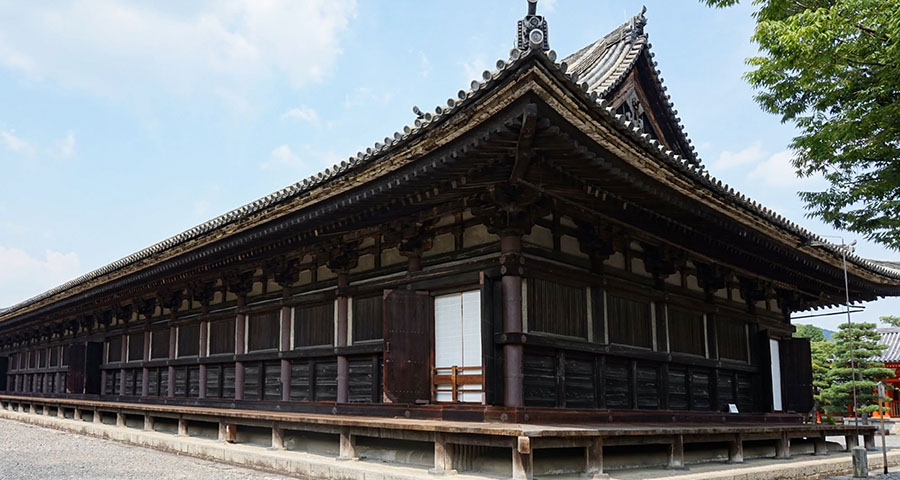
Itinerary

Sanjyusangendo Temple: 1000 buddist statues in a hall
Sanjusangendo (Rengeo-in) Temple was originally built by Taira no Kiyamori for retired emperor Go-Shirakawa in 1164 and dedicated to the Bodhisattva Kannon. The temple features a huge hall containing 1,001 figures of Kannon carved in the 12th and 13th centuries.
Yasaka Pagoda and Koushindou : lovely shot good for social media!
Yasaka Kōshin-dō (八坂庚申堂), or in its full name Daikoku-san Kongō-ji Kōshin-dō (大黒山金剛寺庚申堂) is a small temple located in Higashiyama, Kyoto, Japan. The temple can be found in the vicinity of Kiyomizu-dera.
The temple is dedicated to Kōshin-san (庚申さん) a nickname of its main worship object Shōmen Kongō (青面金剛), a blue, guardian warrior and to the “three wise monkeys”. They represent the Kōshin faith.
In Kōshin belief, Kōshin-san is thought to help all those who strive in their livings, with all their efforts to be good persons. He is also thought to punish the bad.
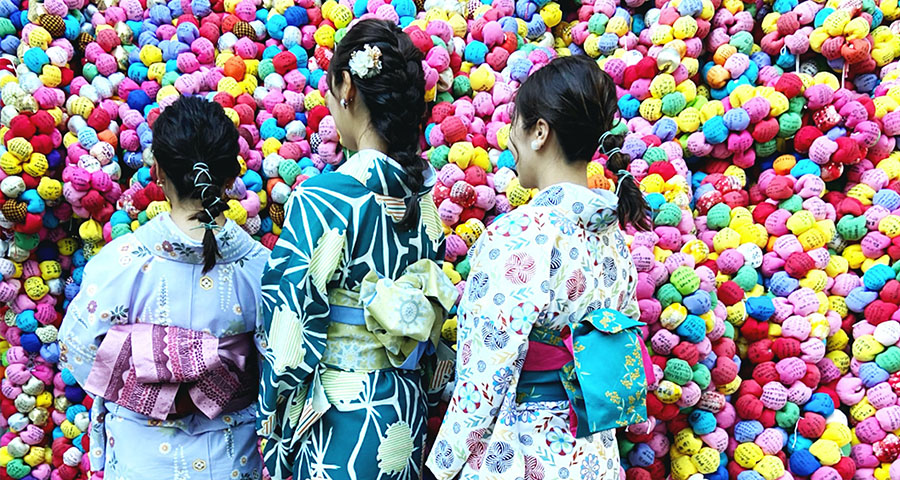
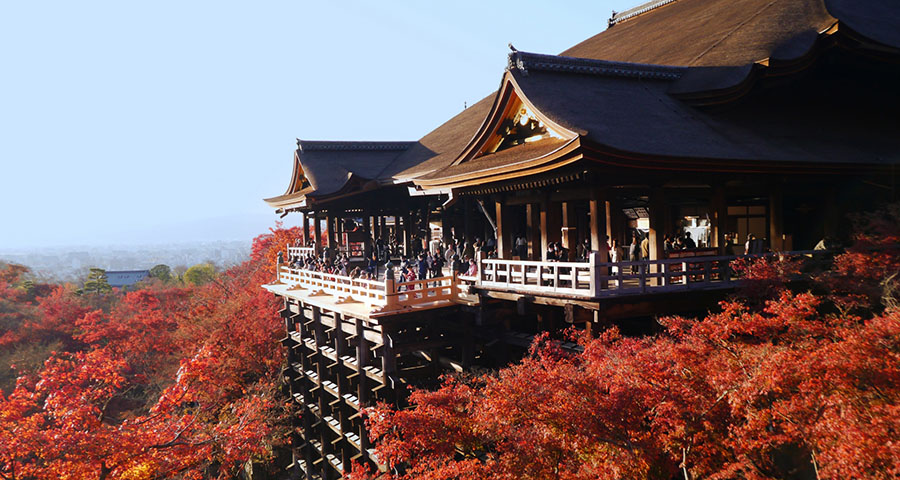
Kiyomizu Temple
Kiyomizu-dera Temple offered a special tour around the temple guided by an English-speaking priest for international visitors. We planned this as a way to give visitors an even deeper understanding of Kiyomizu by sharing a variety of traditional stories in connection with many famous, historic spots and the reflections of Kannon’s merciful heart throughout the grounds. We are confident that the tour participants enjoyed experiencing this profound Kannon Reijo, a holy place with over 1200-year-long history. We will announce future tour details as soon as they are ready.
Ninenzaka and Sannenzaka Shopping Area
Ninen-zaka Slope and Sannen-zaka Slope are iconic streets of Kyoto City, which represent Japan’s good old days. Once you get there, you can’t help taking pictures of this nostalgic and dreamy scenery.
These two slopes are approach to the famous Kiyomizudera Temple (清水寺) and also one of the main attraction of the city for the beautiful scenery.
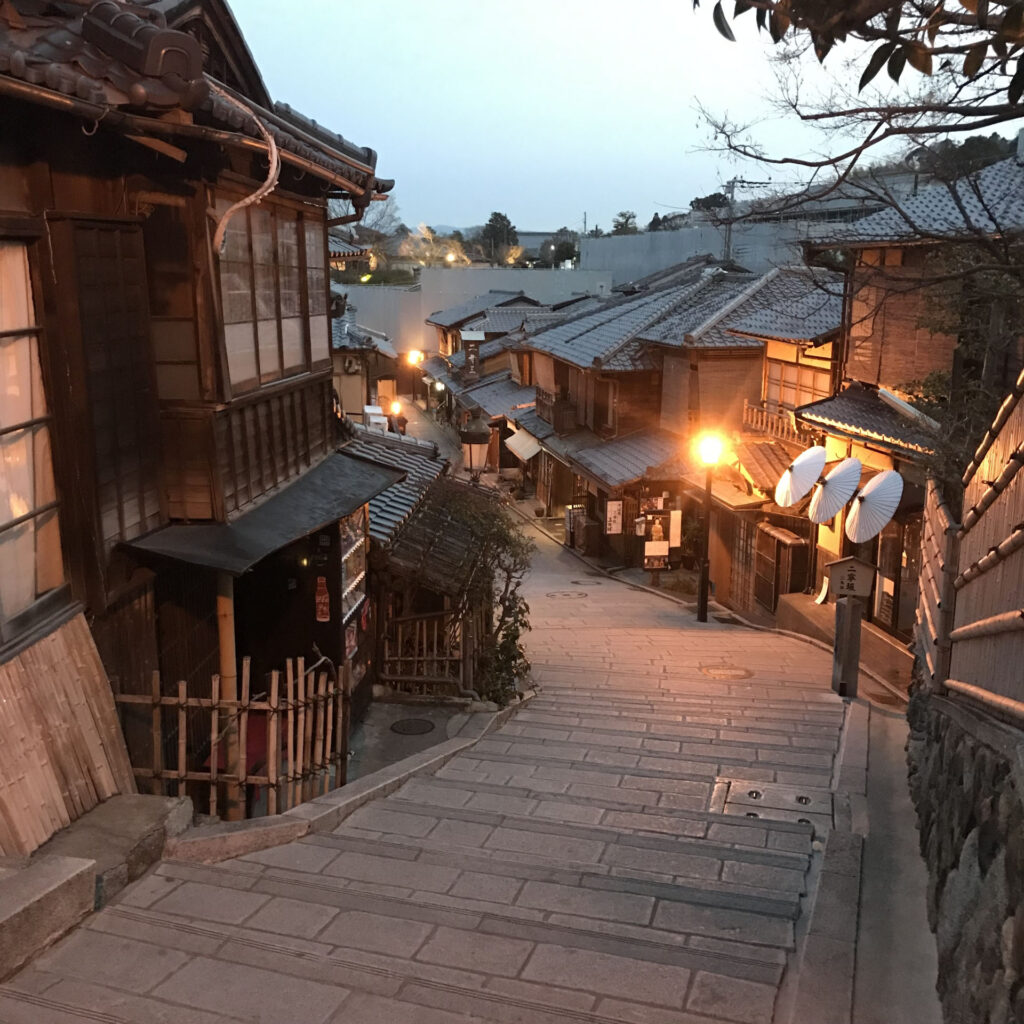

Yasaka Shrine
Yasaka-jinja (jinja means shrine) respects Susanoo-no-mikoto, Kushiinadahime-no-mikoto, and Yahashira-no-mikogami.
Susanoo-no-mikoto is a great god in Japanese mythology, known for his defeat of Yamata-no-orochi (a large serpent with eight heads: a symbol of many disasters), redemption of Kushiinadahime-no-mikoto, and produced the ground great-discernment on the earth.
According to the legend of the shrine, its history may go back as far as 150 years before the Heian era, AC656 (the second year of the reign of Emperor Seimei). Along with the development of the capital, adoration to the shrine spread widely all over Japan. Today, approximately 3,000 satellite shrines exist in various parts of Japan.
Gion District
Ninen-zaka Slope and Sannen-zaka Slope are iconic streets of Kyoto City, which represent Japan’s good old days. Once you get there, you can’t help taking pictures of this nostalgic and dreamy scenery.
These two slopes are approach to the famous Kiyomizudera Temple (清水寺) and also one of the main attraction of the city for the beautiful scenery.
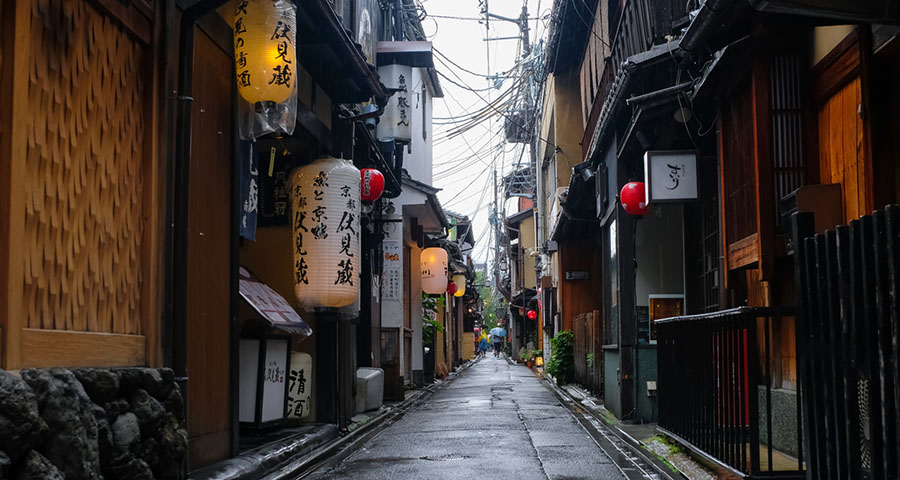
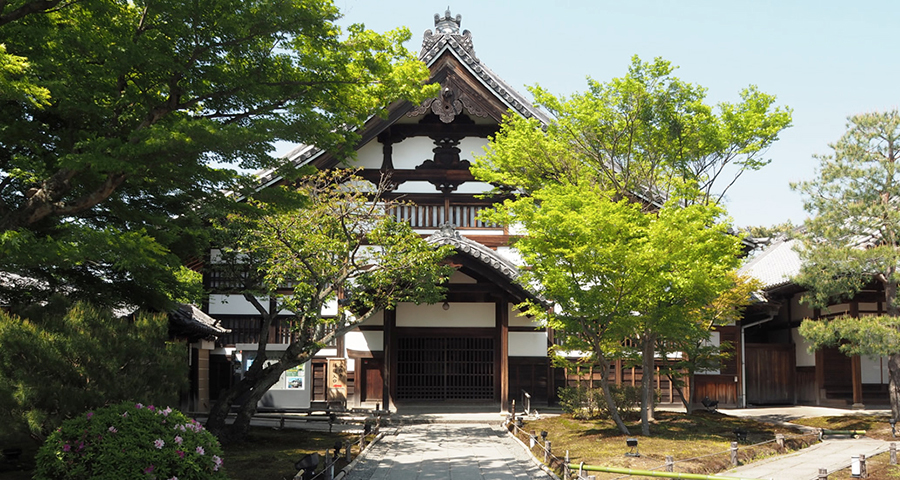
Kodaiji Temple (if available)
Kodai-ji Temple is located north east of Yasaka Hokanji Temple at the foot of Higashiyama Ryozen Mountains in Kyoto. It is officially called Kodaiji-jushozenji Temple. The temple was established in 1606 by Kita-no-Mandokoro (1548-1624) in memory of her late husband Toyotomi Hideyoshi (1536-1598). Kita-no-Mandokoro was also known as Nene. She later became a priestess and assumed the name of Kodaiin Kogetsuni. In July 1624, Sanko Osho from Kenninji Temple was welcomed as the principal monk and the temple was then named Kodai-ji. Tokugawa Ieyasu (1542-1616) (the first Tokugawa shogun) financed the construction of the temple, resulting in its magnificent appearance.
Kenninji Temple (if available)
Kenninji is a temple of the Zen sect, one of the main branches of Japanese Buddhism. Buddhism, founded approximately 2,500 years ago in India by Shakyamuni Buddha, teaches that the inherent suffering of life can be transcended through equanimity, wisdom, and compassion.
The Zen sect, dating back to sixth-century China, seeks the realization of this ideal through a strict training system stressing work and meditation.
At present, there are three branches of Zen in Japan – the Rinzai Soutou and Oubaku schools. Kenninji belongs to the Rinzai tradition. The temple was founded in 1202 by the priest Yousai (1141-1215).
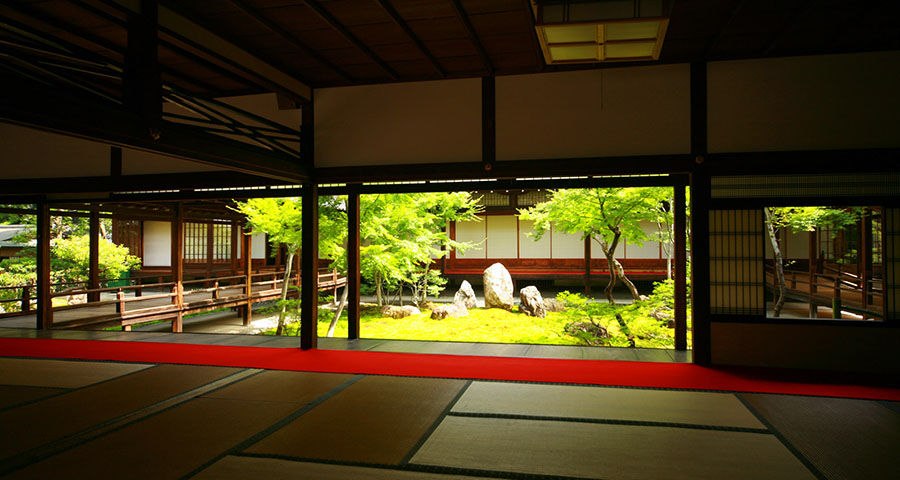
Departure & Return
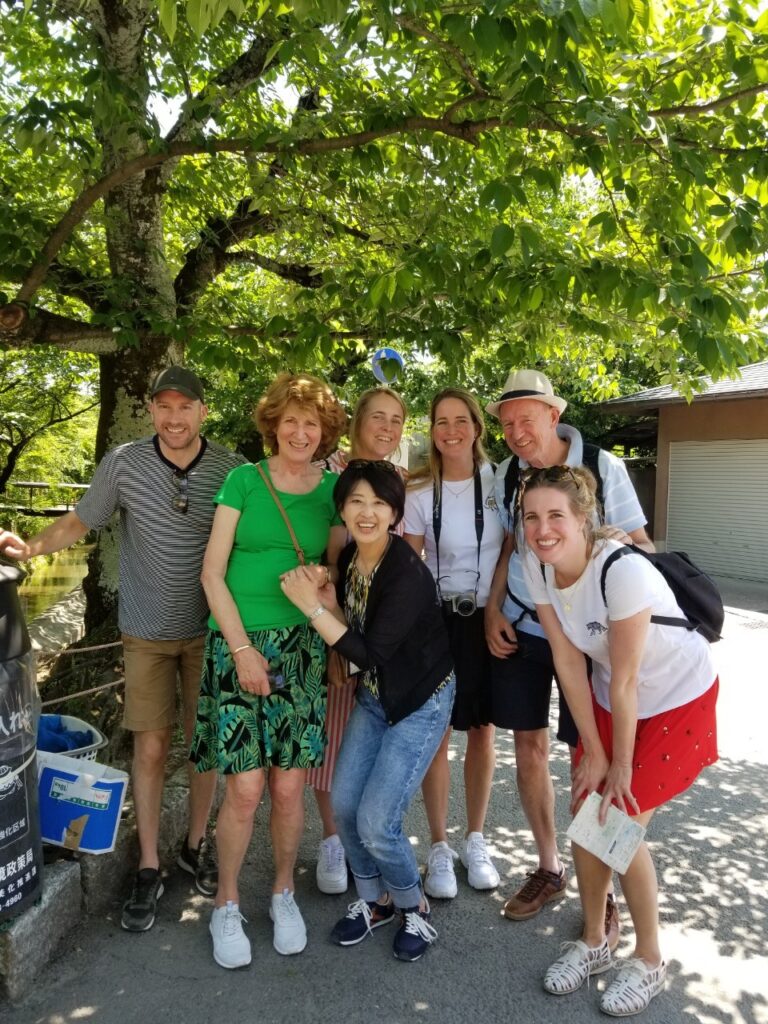
Starting time
08:30 AM ( recommended ) Flexible
Meeting Point
At your hotel in Kyoto
Ending Point
At your hotel or at the last destination for the tour
